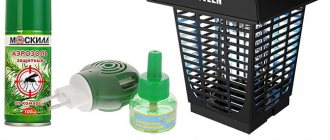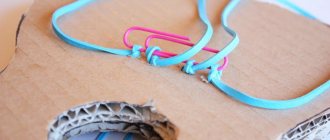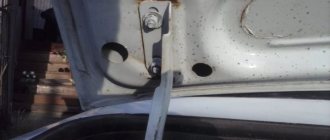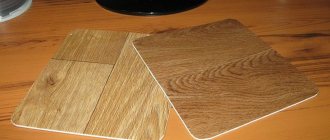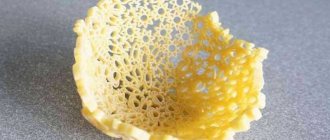There is so much chemistry in our lives that we don’t want to use toxic drugs again, especially if there is a harmless alternative. A popular life hack is a DIY fly trap. This simple device is replete with many modifications, can be made in 5 minutes from scrap materials, and most importantly, it quickly and in large numbers “catches” annoying and unceremonious insects. So, at least, say those who use homemade flytraps. Let's try to figure it out impartially,
Homemade adhesive tape or Velcro for flies
This tape is effective against all types of flies, but it is especially effective against omnivorous and herbivorous species. Other winged insects, including mosquitoes and midges, stick to the tape largely because they choose it as a resting place. Knowing the preferences of flying insects to sit on ceilings and chandeliers, it is better to hang adhesive tapes in the upper part of the rooms. To make adhesive tape you will need:
- Thick paper, cut into long strips 4-6 cm wide. You need to attach a loop to one end of the strip, from which it will be convenient to hang the trap.
- Rosin – 200 ml.
- Castor oil – 100 ml.
- Turpentine – 55 g.
- Granulated sugar – 4 tbsp. l.
- Water – 4 tbsp. l.
You need to boil syrup from water and sugar, bringing it to a yellowish-brown color. When the syrup has cooled a little, add rosin, turpentine and castor oil to it, mix everything thoroughly. Then soak strips of paper with this mixture and hang traps in places where flies are most concentrated - in the kitchen and veranda, above the entrance to the house and window openings, in the toilet.
The ribbons will attract flies with their smell, as well as the opportunity to sit on a surface that is comfortable from the point of view of insects. These devices remain sticky for a long time, so they need to be changed as they become filled with insects.
The given composition of sticky bait is very effective, but if the only thing you have in your house is sugar, you can get by with sugar syrup. The main thing is to make it so thick that flies stick to it well.
Take the container with tongs, place rosin on it and start heating. Wait until the mixture boils and hold for 1-2 minutes until all the turpentine evaporates.
Add oil to boiling rosin and heat the mixture for another 30-60 seconds. Castor oil can be poured out with a syringe. Be careful not to get the oil into the fire to avoid burning your hands or causing a fire. Fat burns well.
Wait until it cools completely. After 10-20 minutes the mixture will thicken. If the proportion is chosen correctly, the glue will be moderately thick. To check the condition, take a match and dip its tip into the impregnation. When you remove the match, the thread of glue should stretch out more than 10 cm. The mixture should be plastic - the torn thread that sticks to the match should be pulled together into one drop.
Prepare paper, fastened sticks, a match for spreading and the glue itself. If you have a standard sheet of paper and not ready-made tape, cut a strip of it 10 cm wide and 30-40 cm long.
Insert the tape between the sticks fastened at the base as shown in the image. Wrap the strip around the sticks twice and tighten slightly until it is firmly in place.
Apply glue to the tape. Holding it by the sticks with one hand, spread the impregnation over the entire strip with a match. Try to keep the layer even, but don't overdo it. There is no need to cover all the paper with glue. For a 30 cm tape, 3-4 heavy drops of glue (as in the photo) are enough.
Where do flies come from in the house?
Spring is coming. The air temperature rises above 10 - 12°C, and flies that hid in cracks or other places in the house during the onset of cold weather begin to awaken from their winter hibernation. With the onset of warmth, they leave their shelter in search of food.
Due to the grid vision, flies do not see a transparent obstacle (window glass), so it is quite difficult for them to fly back out. The insects remain in the house and begin to breed.
The fly can lay its eggs on food, animal excrement, in trash cans, etc. Thus, there are more and more of them. Their eggs end up in human food, causing severe poisoning. In addition, their paws can carry deadly diseases such as typhoid, cholera, anthrax or tuberculosis. Flies cannot be controlled. As soon as they sit down on food once, pathogenic microbes immediately begin to spread. To avoid this, you should never leave open food, and after eating you must put leftovers in the refrigerator.
In addition, flies can be brought into the house along with spoiled food. Most often this happens among summer residents. During the harvesting process, you may come across a slightly spoiled fruit, where flies like to lay eggs. A person brings it into the house and in the warmth of the masonry, full-fledged representatives of this buzzing family very quickly appear.
There are especially many flies near large landfills, compost heaps and outdoor toilets. If human housing is located near these places, the presence of insects in the house is guaranteed. In this case, it is much more difficult to fight them. Keeping animals in the yard can bring the same inconvenience.
Mosquito nets are a salvation from these insects in private homes and cottages. Moreover, they should be not only on the windows, but also on the entrance doors.
These insects can also enter apartments through ventilation ducts and garbage chutes.
The real boom in the appearance of flies occurs in late August - early September. When it gets cold outside, insects flock to a person’s home in search of warmth, where they also lay eggs and go into suspended animation until spring. This is repeated year after year.
In order to facilitate the fight against them, it is necessary, first of all, to take all necessary preventive measures to ensure that there are as few representatives of these insects as possible and getting rid of them is not difficult.
Bottle trap for flies and fruit flies
This is a closed type trap, but it will also attract insects with a sweet smell and catch them with a sticky substance. To make it, use a regular 1.5-2 liter plastic bottle of water or soda.
- The top third of the bottle needs to be cut off, and 200-300 ml of viscous sugar syrup should be poured into the bottom of the lower part. You can add a little honey, beer or fruit juice or fermented jam to the syrup. The consistency should be viscous enough so that insects quickly drown in it and are unable to escape.
- Insert the cut top part of the bottle into the bottom part with the neck down, without a cap. Fasten the two parts with a stapler or tape.
- In order for flies and flies to more actively fall into the bottle, its edges should be lightly greased with sweet syrup and placed where insects fly most often.
If you plan to place the trap outside, it is better to add a little white vinegar to it to repel honey bees and thereby protect them from death.
How to make a flytrap with your own hands
Homemade traps are an excellent alternative to industrial devices. To combat insects you will need a minimum of time and tools. Traps are made quickly.
The advantage of such devices is that they do not contain chemicals and do not pose a serious threat to human health.
How to make a flytrap from a plastic bottle with your own hands
To make it you will need a plastic bottle or eggplant, scissors, a knife, sugar, honey or banana, dry yeast, water.
Step-by-step instruction:
- Divide the bottle into 3 parts. Cut off the top.
- Pour sugar into the bottom so that it completely covers all the bulges.
- Add water, honey and yeast. Mix. If using banana, cut into small pieces or mash with a fork. The mass should be homogeneous. The bait is rotten fruit, a piece of meat with a smell, or another product that emits a strong aroma.
- Place the top of the bottle neck down, after removing the cap.
Advice! You need to leave a distance between the neck and the sweet bait. The flies fly in and can no longer fly out.
In about a week, the bottle flytrap will be filled with insects
Do not shake out flies from the trap; throw away the plastic bottle. Make another trap. There is no need to try to shake out insects. They stuck to the walls and sugar, and even more so, peeling them off with your hands is not hygienic.
You can watch how to make a flytrap with your own hands in the following video:
How to make your own fly trap from a glass jar
To make a flytrap you will need a glass jar and a funnel of a suitable size. The latter can be made from a plastic bottle.
Place nuts or peanut butter in the bottom of a glass jar. Apple cider vinegar, to which dishwashing detergent is added, attracts flies well. Otherwise, insects will be able to drink it while standing on the surface of the liquid. Overripe fruits that begin to rot and ferment work well.
We recommend reading: What are the benefits of peanut butter, composition and calorie content?
Then a funnel is inserted inside and secured. There should be no gaps between it and the walls of the glass jar.
You can wrap it around the circumference with tape or tape
The second option is to finish making an effective fly trap using cling film. Wrap it tightly around the neck. The film should stick and not slide off. You can secure it with a rubber band or wrap it around with tape.
Make several holes in the middle of the film so that flies can fly inside. They won't be able to fly out because they won't be able to find the holes. In addition, flies will not want to leave the container.
When the trap is filled with enough insects, it should be taken to the bathroom. Turn on hot water in the sink, close the drain hole and the holes in the film. When there is enough water, place the jar in it and leave for 10 minutes. The flies will die from the hot temperature. The rest can be drowned.
Throw away the flies along with the contents of the glass jar. To make a new trap, the jar will have to be disinfected or treated with safe chemicals.
How to make your own fly trap from a metal can
Any tall metal can will do for a homemade device. For example, from carbonated drinks, stewed meat, dog food. Scotch tape or any adhesive tape will come in handy. You can take double-sided tape.
Important! The container for making the trap must be washed and dried. Remove label. The shiny color will attract flies.
Step-by-step instructions for making a trap:
- Wrap adhesive tape around a metal can. If you use tape, wrap it with the sticky side down without touching it. Otherwise, you won’t be able to make a trap for flies.
- Rub the tape with your fingers along the entire circumference so that it sticks well to the metal.
- Remove the tape. If the surface of the metal can does not stick well, repeat the procedure.
- Sweet bait will help attract flies to the trap. The top is covered with cling film, as is the case with a glass jar. Make a hole.
The flies will follow the smell and stay inside; some of the insects will stick to the outer walls.
When enough fruit flies have collected outside and inside, the trap is discarded and cannot be reused.
A trap is made from a glass in a similar way. It is placed on a flat surface, and jam is placed inside. This trap model is not suitable for large individuals.
How to make an electric fly trap with your own hands
A homemade automatic fly trap does not protect against insects as effectively as other devices, but it is more kind to the environment. How it works - the light from an incandescent lamp attracts flies, which they can reach through a wire mesh connected to high voltage. The electric shock flycatcher exposes the insect to an electric discharge with its own hands, as a result of which it dies.
You will need to buy the following elements - a regulator to set the required voltage (a dimer will do), an automotive or other ignition coil, a double grid and a lamp for attraction.
The ignition coil, without outside help, will not be able to generate the high voltage that it was able to do; current beams of no more than 14 W are supplied to its input. To do this, you will need a thyristor voltage regulator, which cuts off some part from each half-cycle of the alternating current, the pulse duration becomes shorter or longer. The frequency remains the same.
Connects from a 220 W socket
The design of the thyristor regulator will not allow direct connection to the ignition coil, because it can vary the voltage from about 220 W and above, which is too much for the ignition coil. To do this, a capacitor is connected in series with the regulator.
Next, the voltage is supplied to the common wire of the ignition coil - B, and the left terminal, marked with the letter K. High voltage is removed from the common wire and from the central high-voltage terminal. The wires are fed to the grid.
By adjusting the voltage of the variable resistor, you select the moment at which a spark will not start to jump between the grids. It gives an electric shock even without a visible arc.
To build the grid you will need 2 pieces of chipboard, in which you will need to drill 4 holes in the corners and punch 6 mm diameter pins through the pieces of chipboard. The wire is wound in a circle around the perimeter of the entire structure. Then drill 4 more holes, but at a distance closer to the edge.
Attention! Before making holes for the inner mesh, you should take this into account, leaving a reserve of holes for the outer one.
Use wire without insulation. Make a hole inside the chipboard for the lamp so that it can pass through it freely.
How to make your own sticky fly trap
The main thing in a flycatcher is a sticky and viscous substance that will not allow the insect to escape to freedom. To prepare a trap for flies, you will need rosin, castor oil, a thin soft cloth and two sushi sticks, a metal container for boiling the mixture, and a mini-burner. You can use any oil, but then the Velcro will have to be changed more often.
Process:
- Place rosin (2 parts) in a container and place on a mini-burner. When the mixture boils, hold for minutes.
- Add oil (1 part), continue heating for 60 seconds.
- Leave the mixture to cool. After 20 minutes it will thicken if the proportions are correct.
- Insert the material between the fastened sushi sticks. Wrap the strip several times to secure the fabric.
- Apply the prepared glue evenly to the material.
- Twist the fabric with chopsticks so that the back is also lubricated. If there is excess around the edges, remove.
It is necessary to change the trap when there is no free space left on the sticky tape, or new flies are able to free themselves
Hang the finished Velcro in a place where flies gather locally. Attach the trap to a clothespin or attach it to the ceiling with a button.
How to make your own Australian flycatcher
This is the best trap for flies; if they fall into it, they die from dehydration. The Australian homemade device is the most high-tech solution without the use of chemicals.
Step-by-step instructions for making a trap:
- Take a beam of the required size. Optimal - 40 by 40 mm.
- Make grooves for installing the mesh. Set the saw depth to 12 mm, clamp the beam and make cuts. Repeat the process on the other side so that they are at an angle of 90°C. Connect the frame so that the homemade trap has legs.
- Make a pyramidal bottom. Give maximum attention to the process. Cut the mesh into 4 triangles, turn the model over and screw them to the bars so that the pyramid is inside the body.
- Make a hole in the top so that flies can enter but cannot escape. Cover the remaining sides with a dense mesh. Make the top of the box with a lid so that it closes tightly.
- Place bait inside.
You can place the trap on your lawn or in your home. It is recommended to make the bait yourself or buy it at a hardware store.
Over the course of a week, a huge number of flies will gather in the trap.
How to make your own window fly trap
This device is made like adhesive tape. Only glue is applied to one side of the fabric. The sticky part of the adhesive window fly trap is turned away from the window. You can attach the fabric with a hot gun or use snaps for old frames.
For the second method of making a window fly trap, you will need cardboard packaging or a rectangular metal container. The width should match the corner of the window.
Cut the container at an angle, leaving a partition at the bottom. Treat the inside with adhesive.
Caught insects remain inside; the product should be changed as flies stick
How to make your own outdoor fly trap
In the summer it is impossible to sit outside on a warm evening. The flies literally swarm and bite. They fly towards the light. For the street, you can make a trap from a plastic bottle with sunflower oil or other bait.
Cut off the top of the container along the edge, put something inside that will attract flies. Using a sharp object, make two holes on the sides of the neck and thread the rope. Remove the cap, insert the top into the bottom of the plastic bottle, and secure the structure with tape or tape. Hang a homemade trap under a lamp.
Attention! Such a device will also attract mosquitoes. Once inside, they will not be able to get out.
Outdoor trap options
You can place the product near the house, next to the outdoor toilet, chicken coop or barn. If natural baits are used, they are placed near the resting place.
How to make your own fly trap with an ultraviolet flashlight
A more complex device with an ultraviolet flashlight is better at attracting insects. To make it you will need a tin can, adhesive tape or tape.
Wash the jar and dry it in the sun so that the glue remains on the outer surface. Glue the tape to the outer surface and place in a warm place for an hour. Glue the flashlight inside using hot glue. Remove the tape. Turn on the flashlight.
Advice! It is not necessary to buy a flashlight to make a trap. A small keychain with an ultraviolet light is enough.
The light will attract flies, which on the way to it will stick to the sticky side of the jar; this design works more effectively at night
The second method of a homemade trap with an ultraviolet flashlight:
- Take a plastic container with a tight-fitting lid.
- Make a hole in the bottom. Pass the fabric through and tie a knot so that it does not go through the hole. The fabric on the other side will be attached to the ceiling using a button.
- Make many holes in the container. Cover a plastic jar with tape and leave for a while. Remove the adhesive tape; the glue should remain on the surface.
- Place an ultraviolet flashlight inside and turn it on. The light will pass through many holes, attracting flies, which, trying to crawl through the small holes, will stick to the surface of the container.
"Skillful hands"
When starting to make Velcro, you should not forget that flies are very mobile and do not stay in one place for a long time. This must be taken into account when choosing a high-quality adhesive base, which should reliably hold and destroy an insect that touches it even for a brief moment.
To make a trap, you need to prepare a sticky mixture that will cover the fly fly. There are a large number of different recipes, which include accessible and inexpensive ingredients. You can make an adhesive composition based on the following ingredients:
- rosin 0.2 kg, turpentine –50 g, castor oil 0.1 kg, sugar syrup or molasses – 50 g;
- rosin 0.4 kg, honey 0.1 kg, castor oil, vaseline or machine oil 200 g, glycerin 40 g;
- pine resin 300 g, linseed oil 150 g, wax 10 g, honey or sugar syrup 50 g;
- rosin 0.3 kg, linseed oil 200 g, honey 60 g.
- rosin 30g, castor oil 20g and a little honey or any jam.
Making Velcro for flies
The work of preparing the adhesive base is carried out according to the same principle - resins and rosin are melted in a water bath, brought to a boil, and then other components are added to the resulting mass.
The basic proportion of rosin and oil is 2:1. It can be adjusted to obtain the required density of the composition. The “correct” glue should stretch into a thin “thread” of 100 mm or more.
There is an even easier way to make sticky fly tape. In this case, special ALT glue is used as the main substance that attracts and retains flies. It is used to catch rodents and various insects. The composition of the drug is non-toxic and has an undeniable advantage over homemade mixtures. The glue does not dry out and retains its properties for a long time. Velcro based on it will fight flies until there is no free space left on it from insects.
I made Velcro from ALT glue. Works great.
Stun gun
We will need a high-voltage module, an energy-saving light bulb (preferably spiral-shaped), a battery, a switch, electrical tape, and glue. Let's disassemble the light bulb into its components. We get the cap and flask. We don't need a base.
We cut a hole in the plastic cover into which we thread the switch. We thread the module itself through the cap and solder it to the switch, and the switch to the battery. Attach the module to the lid using hot glue.
The battery can be secured with electrical tape. We drill two holes in the cone, into which we pass a piece of aluminum wire. We wrap each one around the flask so that they do not touch. We cut off the excess.
At the base of the bulb from the inside we see two wires. We connect one of them to the end of the aluminum wire. There are two free contacts left inside the bulb: the second end of the wire and the “original” wiring from the light bulb.
We connect the high-voltage module to these contacts. Place the lid on the flask. The shocker is ready. It needs to be hung in a place where insects gather.
Trap for flies and midges
Small midges that appear in an apartment in the summer (and sometimes in other seasons) are usually fruit flies and wine flies. They appear in the apartment when food suitable for them appears in it - rotting fruits and vegetables, fermented jam.
The easiest way to make a fly trap at home is:
- Take a glass, pour some red wine, kvass, beer or fermented jam into it. For a better effect, you can add a slice of any spoiled fruit.
- Cover the top of the container with film - food or plastic film will do. The film must be stretched so that it forms a flat surface on the neck of the container. Scotch tape or a rubber band will help secure the film in this position.
- Make small holes in the film layer. It is best to pierce them with a toothpick.
The midge trap is ready. Place it in the place where they appear most often, and change the bait as the container fills with insects. Through the holes, the flies will penetrate inside the bait, stick to it and drown, and will not be able to get back out.
The cutest option is the Australian cabinet trap
This trap can be used outdoors - for example, near a dining table under a canopy in a country house, since its catching capacity is quite high, and maintenance operations are performed extremely rarely.
Externally, the flytrap looks like a bedside table made of a wooden frame with small legs, covered on all sides with a fine mesh, under the bottom of which a saucer with a sugar-containing liquid is placed. The secret of catching flies lies in the pyramidal shape of the mesh bottom of the trap, in which there is a hole. As a rule, when they are full, flies fly up, not paying attention to the transparent mesh . As a result, insects enter the flytrap through a hole in the bottom.
For manufacturing you will need the following materials:
- Wooden planks about 30 cm long.
- Canopies.
- Hinged hook with a bracket to secure the lid when closed.
- Self-tapping screws for wood and metal.
- Metal fine mesh. It is important that a fly cannot get into the cell.
- Sealant.
The process of making a flytrap is as follows:
- Assemble a frame from wooden planks in such a way that the entire structure stands on legs about 5 cm high, attach the upper part to canopies and equip it with a hook.
- Cover all sides except the bottom with metal mesh.
- Make a pyramidal bottom of the trap from the mesh, connecting the seams of the mesh with metal screws; you can also use staples for a furniture stapler for this.
- Attach the bottom to the frame of the trap with wood screws.
- At the top of the pyramidal bottom, cut a hole 2 cm in diameter so that flies can enter the trap through it.
- Seal all joints between the mesh and wooden planks with sealant.
- Place the trap in the required place, after placing a saucer under it with a luring liquid - sugar syrup or jam. You can also use industrial fly attractants.
The advantage of this flytrap is that it requires relatively little maintenance, since sometimes you only need to release the flies from the trap and also replace the attracting liquid in the saucer.
Criterias of choice
In order to choose a quality product that satisfies all your needs, you need to know the following:
- For an area of 10-15 sq. meters you will need 1-2 meter adhesive tapes.
- Flies love blue , so you can choose the same color for the ribbon.
- The tape in the package should not be leaking or have an unaesthetic appearance; this indicates that it was stored incorrectly. It should be tightly packed.
- The trap should be easy to remove from the packaging.
- The trap should immediately attract the attention of insects.
- It is better to purchase several small traps and place them throughout the room.
Advantages of adhesive tape
Fly tape is considered one of the most used insect control products. Its popularity is due to a number of factors:
- absence of toxic components in the composition, safety for people and pets (adhesive tapes can be used at home, in kindergartens, hospitals);
- long service life (from 1 to 6 months);
- low cost (even purchased Velcro will not require large financial outlays, but homemade ones will cost practically nothing);
- efficiency;
- versatility (the product can be used in any room, as well as outdoors).
Another advantage is the fact that sticky tapes help fight not only flies, but also other flying insects.
We must remember that the lifespan of Velcro is reduced if you use it outdoors. This is facilitated by dust and small debris falling on the sticky surface.
Outdoor fly trap
This trap is effective against dung and blood-sucking flies, mosquitoes and other midges. You can place it in the local area, next to the outdoor toilet, chicken coop, barn.
How to do:
The light bulb will additionally attract insects at dusk. They will land on the body of the trap and receive a lethal dose of poison.
From midges
Homemade ones are an excellent way out when you can’t use chemicals because family members, small children or animals are prone to allergies. And the savings here will be significant: store-bought traps have different prices, but for preparing them at home, almost nothing special is needed, everything is always at hand.
Bait jars
Take any glass jar, place 2 tablespoons of apple cider vinegar in it (its smell is very attractive to midges), you can add some sweet drink or syrup. The jar is closed with a plastic lid or film, in which entrance holes for midges are pierced with an awl or toothpick. Insects that fly inside on the scent of the bait will not be able to get back out. As they accumulate in the trap, the jar is either thrown away, or the midges are released on the street, and the container is sterilized.
Plastic bottle
The principle of making traps from a plastic bottle is the same as when making a jar trap: flying insects should not get out.
To do this, at the level of the “shoulders” of the bottle, where its main thickness begins, the upper part is evenly cut off and inserted with the narrow neck down. The joints are taped, and there should already be food bait at the bottom. The ideal bait for midges is sweet liquids, wine or beer, and rotting fruits.
To make the process of making a trap easier for yourself, you can not bother cutting off its top part, but simply make a funnel out of paper and insert it into the narrow neck.
Wine container
Take a regular bowl or container and pour a little wine into the bottom. The smell of this midge drink is very rich, and midges will immediately smell it. In addition, wine is produced by fermentation, and fermented foods are one of the favorite delicacies of these little bores.
Add a little dishwashing liquid or just liquid soap into the wine. In such a slippery mixture, midges will not be able to stay on the surface, their wings will stick together, and the insects will begin to drown.
Plastic bag
Not the most common method, but if you perform certain actions quickly, it can work well.
Place a sweet food bait (for example, fruit that is starting to spoil) inside the bag. Wait until midges accumulate there and very quickly tie the bag into a knot. After that, take it to the trash.
The main disadvantage of this method: the midges are also quite nimble, and some of them may have time to fly out if the actions when tying the bag are not very fast. And it is not always possible or desirable to wait until insects accumulate there.
Fly-eating plant
I really like the third method of fighting flies. But I can't afford it. It is based on the breeding of flytrap plants. They look very beautiful, catch flies very well, and most importantly, you don’t need to do anything for this. The plant is smart enough and can handle them on its own. I would love to buy a couple of these plants for my home, but I haven’t seen them anywhere in our flower shops. Maybe someone can tell me where I can buy at least seeds for breeding them? One more thing, you need to understand that such home helpers are very poisonous, their juice is very dangerous for humans (if taken orally) and can cause poisoning, so do not allow pets and especially children near them. By the way, mint, lavender, and eucalyptus also repel flies; they should also be grown on the windowsill.
Preventing the appearance of flies in the house
So, to avoid the appearance of flies in the house , you must adhere to preventive measures:
- maintain cleanliness, especially in the kitchen (crumbs and leftover food on the table, garbage, dirty dishes, spoiled food, high humidity - all this attracts flies and contributes to an increase in their numbers);
- food waste must be placed in a trash can , which must be closed and emptied frequently ;
- storage should be organized in closed containers and/or in the refrigerator ;
- regular cleaning of the house, dry and wet ;
- , toilet and sink drains must be clean and wiped dry.
There are additional preventive measures for owners of dachas and private houses
- monitor the cleanliness of outdoor toilets;
- pay special attention paddocks and sheds for keeping livestock and poultry (if any);
- avoid locating landfills and compost heaps near the house ;
- Particular attention should be paid to places where water may stagnate.
One of the effective means of preventing insects from entering your home is a variety of mosquito nets. They should not be neglected, especially in the warm season.
It has been noted that flies cannot tolerate the strong smell and presence of certain plants. So, if you plant wormwood, elderberry or bird cherry under your windows in a private house, you can forget about insects. These plants repel flies.
Geranium, tomato leaves and wormwood have the same properties. The first one can be planted on a windowsill for preventive purposes, and the leaves of tomato and wormwood in the form of a bouquet can be placed in a vase. Such plants, even when dried, have repellent properties.
If insects do get into your home, there are a huge number of ways to get rid of flies in the house. Moreover, it is worth starting the fight against them as early as possible in order to avoid their reproduction.
Trap from a jar and an ultraviolet flashlight
This remedy is relatively effective against all types of flying insects.
To make it you will need:
- scotch;
- glass jar;
- a small ultraviolet flashlight, for example, in the form of a keychain.
You can wrap the jar with tape with the adhesive side facing out, or you can transfer the adhesive layer to the surface of the jar itself.
In the second case, the outside of the jar should first be wiped with a cloth soaked in alcohol, vodka or cologne to degrease the surface. After this, you need to wrap the jar with tape with the adhesive side inward, without touching the glass surface with your fingers, and expose it to the sun for 2-4 hours. After this time, the tape must be carefully removed. The adhesive layer will remain on the jar. The first option is, of course, simpler, but the second is more effective.
Place a UV flashlight in the prepared trap and place the trap in the area where flies fly most often. Insects attracted by the light will land on the surface of the jar and stick to its surface.
Proven folk methods
Before resorting to radical measures to destroy parasites, if there are large numbers, it is worth trying to drive them out. Our grandmothers used this ancient method.
They took a towel or branches of any tree with leaves in their hands, stood on the opposite side of the room from the open door, and, waving in a circular motion, drove the flies up and down towards the door. It will not be possible to get rid of all the insects, but some of them will end up outside the apartment.
Another method that does not require complex manipulations. It is necessary to darken all the windows in the room, with the exception of one, which will be a kind of light trap. Flies don't like the dark; they will fly towards a light source and end up outside. This method is not 100% effective, but other means will help exterminate the remaining insects.
Using a fly swatter, or objects that replace it - magazines or newspapers rolled into a tube. The method does not require material costs, the disadvantage is that traces of crushed flies remain on the surfaces.
Flies cannot stand the smell of alcohol; if you spray vodka from a spray bottle in a room, the insects will leave it. The method is good for an apartment or cottage, but it cannot be used in an office; problems may arise.
Aromatic essential oils repel insects; flies do not like the smells of such herbs:
- lavender;
- peppermint;
- eucalyptus;
- lemongrass;
- citronella;
- carnations;
- anise
Essential oils of these plants are added to water when cleaning rooms, and their solutions are sprayed on doors and window frames. They soak cotton pads or balls and place them on window sills, kitchen tables, and near trash containers.
You can make your own poison for flies. To 3 tablespoons of milk add 5 teaspoons of baking soda and 0.5 tablespoons of formaldehyde. Place a saucer with the mixture with the addition of crumbled bread at the location of the insects.
The product takes effect within a few hours, and after consumption the insect dies. Sweet water with ground black pepper is a mixture that is harmful to flies.
Place bouquets of herbs: tansy, castor bean, elderberry flowers, fern leaves in the room, the flies will leave the room.
A decoction of the toadflax herb is a good insect repellent.
Flies don't like the smell of cloves. Cut a lemon in half, bury 5-10 clove buds into the pulp, the aroma will repel pests for a long time. You can simply spread the buds or make a decoction and spray it on doors and windows.
The smell of geranium is unpleasant to flies; an indoor flower on the windowsill repels pests.
Basil is planted near the house; flies do not like this fragrant plant.
Bay leaf helps in fighting flies. The leaves can be laid out on windowsills, in table drawers, or prepared as a tincture; You need to take 10-15 leaves per glass of boiling water and leave for 24 hours. Wipe window frames and doors with the solution.
Place dried lavender flowers in bags or bouquets around the house, you can add clover.
Operating principle
Sticky tape is one of the safest means used to kill flying insects. And this nuance is especially important when the trap is used in a room where children live or food is prepared.
Fly Velcro is a simple design that has a viscous and sticky component. The principle of its operation is quite simple. The tape is impregnated with a special viscous glue. The latter contains exclusively natural substances that attract flies with their aroma. An insect that touches the sticky strip hopelessly sticks to its surface, as a result of which it soon dies.
Another interesting fact is that flying insects are not frightened by relatives stuck to such a tape, but on the contrary, they are attracted. Therefore, the more flies there are on the adhesive tape, the more insects tend to land on it. Taking this feature into account, many manufacturers of such fly traps apply images of these insects to the sticky part of the product.
What can be used as bait?
Rotten vegetables, fruits, fish and meat, and plant juice serve as food for flies. They are attracted to putrid, sour smells and sweet foods. Taking into account their preferences, the composition of the bait in the traps is formed. The following ingredients are used:
- spoiled, soft fruits and berries;
- raw meat;
- sweet water or compote;
- lumps of sugar;
- beer;
- honey;
- juices;
- apple cider vinegar;
- kvass.
The choice of means and methods for getting rid of flies depends on the type of infested room. But the safety of the people living in it is put first. In situations where you cannot get rid of winged pests on your own, you can contact a special company that provides pest control services.
How to make your traps more effective
The likelihood of flies disappearing soon will increase if you use different types of traps. To catch more flies, it is better to make several traps and place them in different places in the apartment (or garden).
Important: flies should not have the opportunity to intercept a piece of food outside the trap. The effect will be much greater if the fly bait food is the only one available. Therefore, all food products must be put away in cupboards and the refrigerator, and fruit drops, if we are talking about a garden, must be taken outside the garden and buried.
What it is?
Fly sticky is a simple and ingenious remedy. I opened the package, hung it up and forgot, and the flies themselves will find their way to it, gathering for a special specific smell. The flytrap looks like a ribbon made of thick paper hanging from the ceiling. The product is impregnated with a sticky substance, once on which a fly cannot escape.
Velcro was invented by the German confectioner Theodor Kaiser. For many years he experimented with different syrups laid out on cardboard until he came up with the idea of cutting it into flat ribbons and rolling them into a tube. Kaiser involved his chemist friend in the process of creating the flytrap. They were able to produce a product with a sticky, fly-attracting composition that did not dry out for a long time. In 1910, the first production of Velcro was established in Germany.
Many people choose Velcro from all kinds of fly control products, as they have a lot of advantages:
- the paper with an adhesive base that makes up the flytrap is completely harmless to people;
- the product is suspended from the ceiling and is out of reach of children and animals;
- most traps contain an aroma that attracts insects, but is not captured by people, so even those who cannot stand foreign odors can use Velcro;
- fly strips have a long service life;
- The product is inexpensive and highly effective.
Flytraps can be used indoors without fear of poisoning. They also work well without running out of steam in open spaces. The only thing that can reduce the activity of the tape in outdoor conditions is the accumulation of dust; the presence of foreign particles causes the composition on the tape to lose its viscosity.
Tools Overview
The most popular and effective today are the following:
- Adhesive tape from the manufacturer Insectum Laboratory. Pack of 4 pieces. cost 40 rubles. The packaging of the product will reliably protect your home from flies throughout the year. It contains a special adhesive and pheromones.
- Velcro Raptor. The tape will protect against pests for 2 months. For a room up to 15 square meters, 1 tape is enough. Cost 30 rubles. The product contains pheromones and rubber glue.
- Dipter tape. There are 104 pieces in a box. Price for 1 piece. equal to 5 rubles. It is based on special glue and pheromones.
- Flycatcher Ted. Designed to protect up to 15 sq.m. area. Price 5 rubles. Consists of paper impregnated with glue and pheromones.
- Clean house. One tape will protect 10 square meters. m. premises. The cost for one piece is 15 rubles.
- Moskitol. Designed for an area of 10 square meters. meters. Cost 15 rubles per piece. Contains rubber adhesive and pheromones.
- Fumitox. A meter-long tape with the active ingredient attractant. To protect a room of 15 square meters. meters you will need 1-2 tapes. Cost 20 rubles per piece. It consists of a meter-long strip of paper treated with glue and special hormones that attract insects.
Source
Manufacturing instructions
To make Velcro at home, you will need oilcloth or any thick paper, as well as an adhesive component prepared according to one of the proposed recipes. The process of making a trap includes the following sequence of simple steps:
- Cutting paper into strips, the width of which does not exceed 40-50 mm, and the length - 0.5 m. A loop is attached to one end of the workpiece for hanging Velcro.
- Place the tin container in a water bath and heat the required amount of rosin in it.
- Bring rosin to a boil and add castor oil to it. The process continues until a homogeneous mass is obtained, into which honey or another sweet component that attracts flies is subsequently poured.
- Applying a hot sticky compound to a piece of paper. The tape should be covered on both sides. The thickness of the adhesive layer should be no more than 2-3 mm.
Ready-made Velcro is placed in areas of greatest concentration of flies. To prevent the tape from curling, a small weight is attached to it. If everything is done correctly, the glue will stick to your fingers, leaving thin threads on them.
The presence of castor oil in the sticky mixture prolongs its service life.
Homemade Velcro is in no way inferior in effectiveness to store-bought counterparts. Change them as needed - there is no free space or the flies leave the bait without effort.
An unusual option for fighting is predator plants
Plants that feed on small flies, mosquitoes and other insects. They do not require special care, tolerate unfavorable conditions well and do not take up much living space, but, nevertheless, they fight flies well.
In conclusion, it is worth noting that the reproduction of flies occurs quite quickly, which is why they are extremely popular among biologists. They are an ideal object for conducting many experiments. The genetic code of these insects has many similarities with humans. Thanks to this, scientists have the opportunity to develop new means of combating cancer and hereditary diseases.
To a greater extent, fruit flies are not pests; they process waste and enhance decomposition processes, returning minerals and oxygen to the cycle of substances, but, nevertheless, they extremely poison human life. When used in combination, the remedies proposed in this article will help make life easier and get rid of annoying fruit flies.
Tags: fruit fly, trap, hand, yours, vinegar
About the author: admin4ik
« Previous entry
